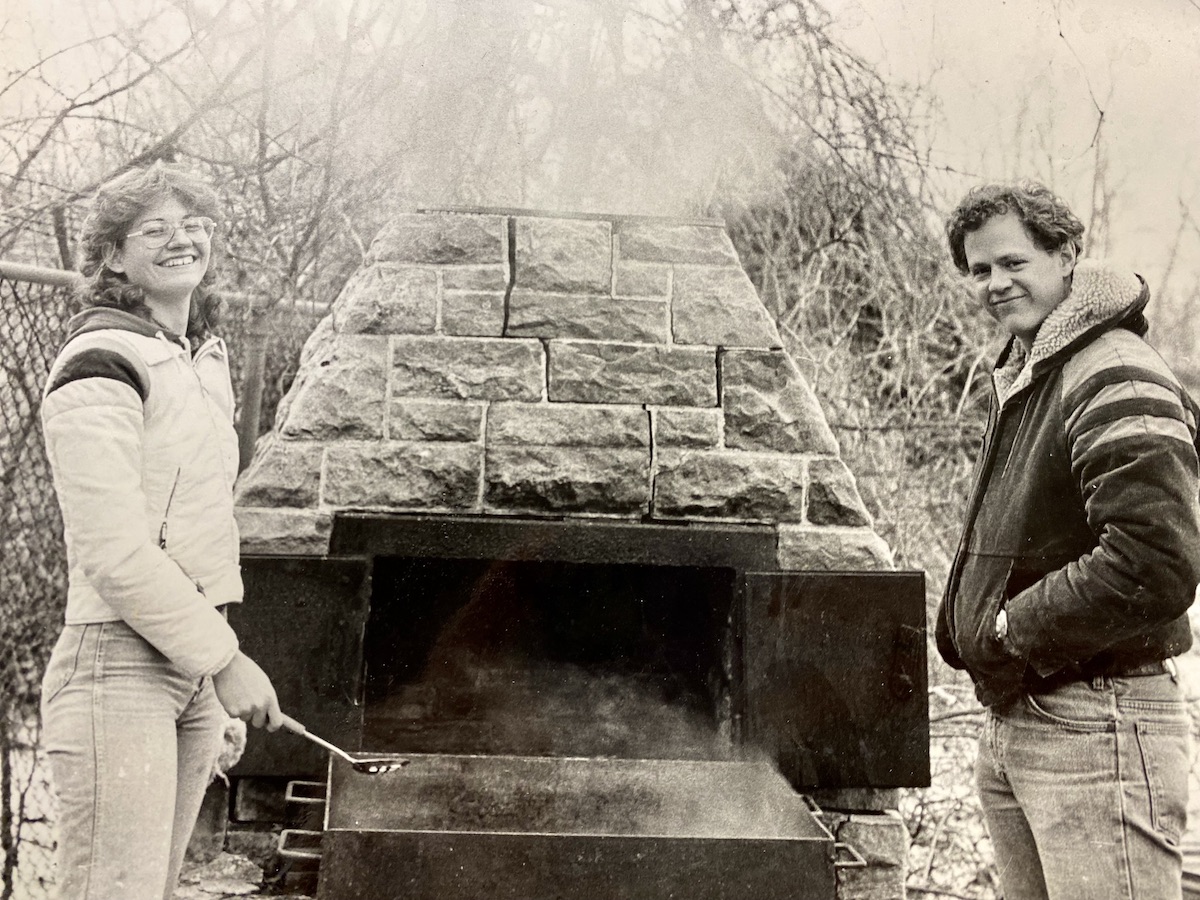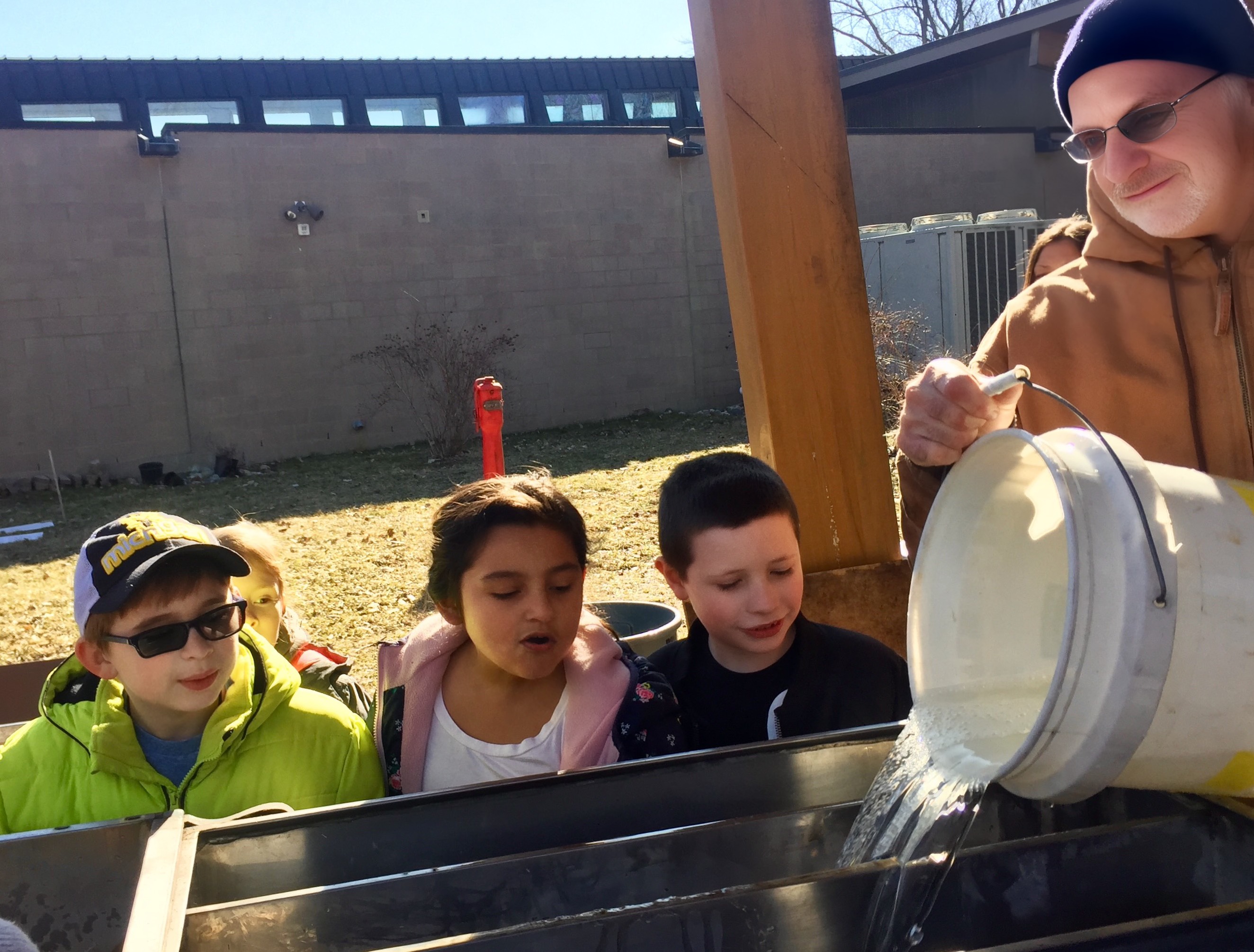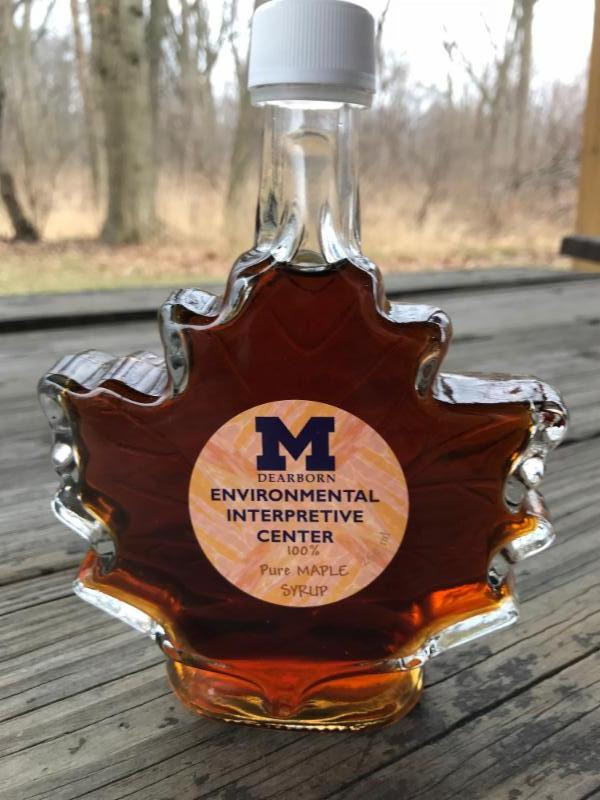
A squirrel ran across a maple tree’s large branch, stopped near the end and plopped down for a snack. Its nibble of choice? The maple tree’s leaf buds. Most people might not notice an animal grabbing a bite to eat in the tree canopy. But UM-Dearborn’s Environmental Study Area Program Manager Rick Simek has a sense about these things.
Sitting at an outdoor picnic table, Simek said he’s unsure of the impact this year’s warmer Michigan winter will have on the trees’ sap production. Simek then paused and then squinted to get a better look at movement in the trees. “Some animals have sweet tooths, just like we do. That squirrel is eating the maple buds. If the squirrel thinks those are pretty tasty, that’s a good sign,” Simek said. “It tells us that the sap is moving around in the tree and it’s time to tap.”
That’s an especially good thing for UM-Dearborn’s long-standing campus maple syrup collecting tradition. On Saturday, Feb. 18, community members are invited to help the university’s Environmental Interpretive Center staff tap 50 maples to begin the sap collection process. Volunteers can also help hang sap buckets — basically round tin structures with a bent lid — on the trees too. Interested in the all-ages event? Sign up.
“We enjoy sharing this beautiful part of our campus with the public to experience traditional seasonal activities that go back a long, long time in our part of the world,” Simek said. In addition to the tapping activity, Simek said people will learn how to identify non-leafed sugar and black maple trees and other distinguishing characteristics about maples. They’ll also hear about the maple syrup-making process and its history on the land.
Here’s a taste of information volunteers will get at Saturday’s program.








